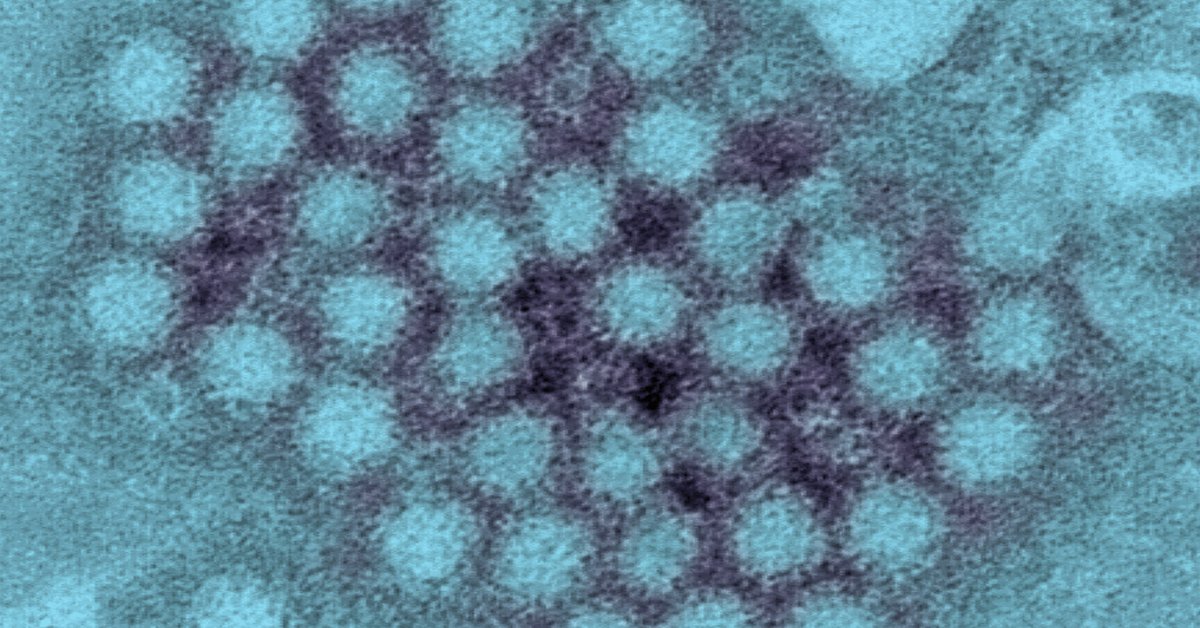
While SARS-CoV-2 has dominated headlines for the previous few years, different viruses have been simmering within the background. And with most of COVID-19’s an infection management measures (like mask-wearing, isolation, and bodily distancing) now gone within the U.S., these viruses are beginning to roar again once more.
The U.S. has already seen spikes in RSV and influenza, and now norovirus circumstances are inching upward, in accordance with the most recent knowledge from the U.S. Facilities for Illness Management and Prevention (CDC). In contrast to SARS-CoV-2, RSV, and influenza, norovirus is just not a respiratory pathogen however as a substitute causes issues within the gastrointestinal tract. Every year, the U.S. has about 2,500 outbreaks that usually happen through the winter months from November to April, resulting in 19 to 21 million circumstances of sickness and almost half one million emergency-room visits. Younger youngsters and older persons are essentially the most susceptible to severe problems from the infections, resulting in 100,000 hospitalizations and 900 deaths yearly.
The CDC tracks norovirus circumstances via the Nationwide Respiratory and Enteric Virus Surveillance System (NREVSS), which receives studies of optimistic norovirus checks from scientific labs and state and native state well being departments from across the nation. Since mid-January, the three-week common of p.c of optimistic checks has jumped from 10.5% to 15% within the first week of February.
As a result of norovirus infections aren’t one of many required illnesses for state well being departments to report back to the CDC, on condition that most individuals aren’t examined for it, the company additionally tracks the virus by way of outbreaks via its Norovirus Sentinel Testing and Monitoring community (NoroSTAT). The community contains knowledge on outbreaks—which the CDC defines as two or extra circumstances ensuing from a typical publicity or supply that lab checks have confirmed are as a result of norovirus, or that docs suspect are brought on by norovirus—from 14 state well being departments. In January 2023—essentially the most not too long ago recorded knowledge—NoroSTAT reported a pointy enhance from 15 to 26 outbreaks of norovirus. Total, there have been extra outbreaks this 12 months in comparison with final 12 months, when numbers have been low as a result of pandemic protocols reminiscent of mask-wearing and social distancing doubtless hampered the virus’ skill to unfold. That implies that the current upticks this 12 months are doubtless a resetting again to pre-pandemic cycles of infections. Nonetheless, when checked out over developments from the previous decade, “Right now, I don’t suppose we’re seeing something sudden or uncommon,” says Sara Mirza, an epidemiologist within the CDC’s division of viral illnesses. “We’re proper on observe for a typical nornovirus season.”
“I do suppose we getting again to pre-pandemic epidemiology of many these viruses,” says Dr. Camille Sabella, director of the middle for pediatric infectious illnesses at Cleveland Clinic Youngsters’s.
Right here’s what you should find out about norovirus.
What’s norovirus?
Norovirus belongs to a household of viruses referred to as Caliciviridae and—like SARS-CoV-2—are made up of single strands of the genetic materials RNA. There are dozens of various variants of norovirus, often known as the abdomen flu or viral gastroenteritis.
The virus may be very contagious and spreads shortly amongst contaminated individuals by way of shut contact, touching contaminated surfaces reminiscent of doorknobs and handles, and sharing meals and utensils.
The place does norovirus come from?
In contrast to many different viruses, norovirus doesn’t sequester in animals and soar to individuals, however persists and predominantly spreads in individuals. “The reservoir for norovirus is at all times people or human waste materials,” says Lee-Ann Jaykus, professor of meals bioprocessing and diet sciences at North Carolina State College. A gram of contaminated feces can include billions of virus particles, and it solely takes anyplace from 10 to 1,000 particles to make somebody sick. The virus can survive in water sources for lengthy durations of time, so anyplace sewage or bilge is dumped, there’s a very good probability of discovering the virus. “For those who go to all of the water sources within the nation, and ask what the potential is to get some quantity of norovirus genomes, it’s fairly excessive,” says James Samuel, division head of microbial pathogenesis and immunology at Texas A&M Faculty of Medication.
That features water feeding into areas the place shellfish develop. As filter feeders, mollusks and oysters can harbor the virus and sicken individuals who eat them. The newest norovirus outbreak reported by the CDC occurred amongst oysters in Galveston Bay, Texas in December.
And as soon as somebody will get contaminated, the virus’ excessive contagiousness means outbreaks happen mostly in group settings, most famously on cruise ships the place persons are in shut quarters for prolonged durations of time and shared surfaces is probably not sanitized regularly. However these exposures solely account for about 1% of norovirus outbreaks within the nation; the bulk happen in locations reminiscent of hospitals and long-term care services, eating places and catered occasions like weddings, faculties, and childcare facilities. “About 80% of the transmission happens when the virus spreads from individual to individual,” says Mirza.
What are the signs?
The abdomen flu causes vomiting, diarrhea, and queasiness. Some individuals expertise abdomen ache and fever, and signs often begin anyplace from 12 to 48 hours after an infection. Most individuals really feel sick for about one to a few days.
Can I be examined for norovirus?
Medical doctors can carry out a check, nevertheless it requires a stool pattern. Such sampling is usually completed by analysis scientists monitoring an outbreak. “We don’t generally check for these viruses in most people,” says Sabella. “After we see these sufferers, often from the case historical past it’s very clear that viral gastroenteritis is probably going.” As a result of the virus spreads so shortly, if members of the family all expertise the identical signs in shut proximity, for instance, docs will suspect norovirus or an identical viral an infection.
How norovirus is handled
There isn’t a vaccine or remedy for norovirus, however the an infection is an efficient candidate for one, says Samuel. The current success of utilizing mRNA know-how within the COVID-19 vaccines ought to result in a push for utilizing the identical platform for a norovirus vaccine. “There may be going to be a renaissance, I predict, by way of vaccines utilizing mRNA towards quite a few completely different illnesses,” he says, together with the abdomen flu.
In relation to therapies for norovirus, the necessity is probably not as pressing, since most individuals get better from the signs in 48 to 72 hours—so antiviral growth isn’t as sturdy. “Whereas there are a lot of completely different viruses that trigger gastroenteritis, nearly all of the time it’s not essential to know what particular virus is inflicting signs as a result of the remedy is mostly the identical,” says Sabella. Medical doctors advise individuals to drink loads of liquids, since vomiting and diarrhea and result in dehydration. In some circumstances, they could advocate anti-nausea medicines to ease signs.
The best way to defend your self from norovirus
“Norovirus is an extremely hardy virus,” says Mirza. Which means it’s harder to get rid of than SARS-CoV-2. Begin with the identical an infection management measures for COVID-19, however maintain these extra issues in thoughts:
- Wash your palms with cleaning soap and water, not hand sanitizer, regularly. Hand sanitizers received’t inactivate norovirus, says Jaykus, however the bodily act of washing your palms, plus the cleaning soap and working water, can take away extra virus.
- Wash vegatables and fruits completely earlier than consuming.
- Prepare dinner seafood to no less than 145°F.
- Attempt to isolate and sanitize shared surfaces if somebody in your family is contaminated. If there’s feces or vomit on the floor, clear it first earlier than disinfecting it, since disinfecting brokers don’t work as effectively within the presence of natural materials.
Extra Should-Reads From TIME



